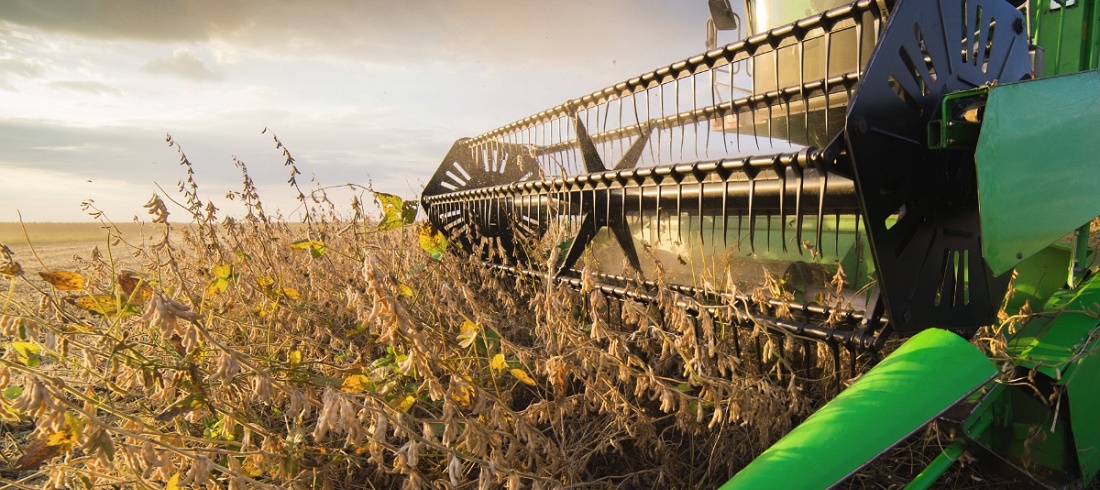
Good harvest prospects set to pressure soybean prices in early 2025
Jan, 02, 2025 Posted by Gabriel MalheirosWeek 202501
Soybean prices on the international market have been on a downward trajectory throughout 2024, and the current supply and demand fundamentals suggest they will remain below year-ago levels through the first quarter of 2025.
The primary factor driving this decline is the robust supply outlook. Unlike last year, when Brazilian and Argentinian harvests underperformed, this season’s projections indicate strong harvests, leaving little room for prices to climb above $10 per bushel on the Chicago Board of Trade. For comparison, January 2024 futures contracts averaged around $12 per bushel.
Adding to the pressure is the strong yield from U.S. crops. According to Valor Data, soybean prices have fallen by more than 25% over the past 12 months.
“We have a favorable supply picture for 2025,” says Francisco Queiroz, an analyst at Itaú BBA’s Agro Consultancy. “January weather conditions are expected to mirror those of December, which indicates good production.”
StoneX grain market intelligence specialist Ana Luiza Lodi agrees that the abundant supply will continue to weigh on international prices. “This [supply] factor has rendered the price increase unsustainable. The potential for record crops in Brazil and excellent yields in Argentina ensures a surplus soybean supply,” she notes.
The U.S. Department of Agriculture’s (USDA) December supply and demand report supports this outlook. The USDA estimates Brazil’s 2024/25 soybean harvest to be 169 million tonnes, up from 153 million tonnes in the previous cycle. Argentina is projected to produce 52 million tonnes, compared to 48.21 million tonnes last year.
With the 2025 supply nearly assured, limited factors could spur a price rebound. Demand growth is one potential variable. “Global demand for soybeans could rise by 5% in 2024/25, twice the average for the period,” says Mr. Queiroz. “However, if this demand doesn’t materialize, it will lead to higher stockpiles and further price pressure.”
Analyst Vlamir Brandalizze of Brandalizze Consulting points to May, when the U.S. begins planting its grain crop, as a key period for the soybean market. He notes that if soybean prices fall below $10.20 per bushel, U.S. farmers might shift acreage to corn, potentially setting the stage for price recovery in the second half of 2025.
Despite declining soybean prices this year, sales of the 2024/25 harvest are advancing at a brisk pace. Farmers are eager to mitigate the intensified selling pressure typically seen during harvest, particularly given Brazil’s chronic shortage of grain storage facilities.
According to Brandalizze Consulting, farmers have already pre-sold 35% of the soybeans they will begin harvesting this month. By comparison, only 20% of production was negotiated at the same time last year, with a ten-year average of 30%.
“Farmers are alarmed by the prospect of a bumper crop and have sold ahead of schedule. If this turns into a record harvest, we’ll likely see significant price drops in the first three months after harvesting,” explains consultant Vlamir Brandalizze. He adds that storage challenges will become acute given the shortfall in infrastructure for storing the anticipated production volumes.
Mr. Brandalizze projects that soybean prices could fall 10% to 15% below current levels during the South American harvest. By late December, soybean contracts for April and May 2025 delivery ranged from R$130 to R$131 per bag at the ports. The July contract was priced at R$135, and August at R$137 per bag.
Meanwhile, corn sales are lagging behind soybean transactions. With less than two months before planting of the second yearly crop begins, farmers have sold less than 20% of the expected output in advance, compared to a historical average of 30%.
“Corn farmers are holding off, anticipating further price increases,” Mr. Brandalizze notes. Corn prices at the ports have averaged R$75 per bag, while contracts for July delivery are trading at R$70 per bag.
The fires that ravaged sugarcane fields last year have spurred record demand for corn as a raw material for ethanol production, coupled with rising demand for animal feed. “We’re ending the year with low corn stocks and will rely heavily on the next crop, which must at least match the 2024 planting area to keep supply aligned with demand,” Mr. Brandalizze concludes.
Translation: Todd Harkin
By Paulo Santos e Cibelle Bouças
Source: Valor International
-
Fish
Apr, 23, 2024
0
Brazil Fish Farming Exports Show Steady Growth in Q1
-
Ports and Terminals
Nov, 21, 2021
0
ANTAQ auctions areas in the ports of Santos (SP) and Imbituba (SC) for more than R$ 550 mi
-
Ports and Terminals
Jun, 08, 2021
0
Santos Brasil sets handling record for a single vessel
-
Ports and Terminals
Jun, 26, 2023
0
DP World proceeds with electrification projects in Brazil


